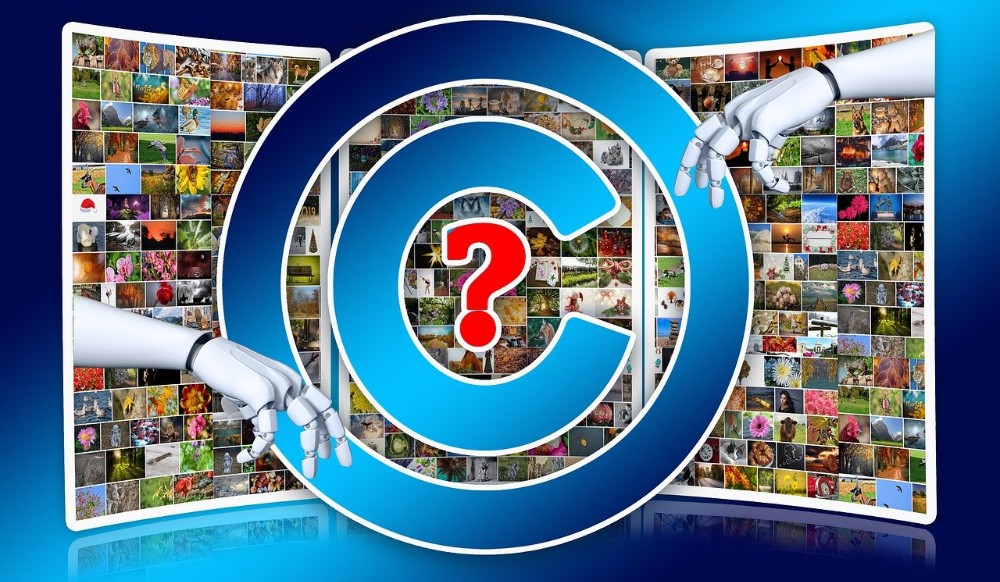Mickey Mouse, Claudine Gay, and ChatGPT all are experiencing the pressures of keeping in step with copyright laws that were originally created in the analog age.
According to the United States Copyright Office, “the principle that an author of a work may reap the fruits of his or her intellectual creativity for a limited amount of time” has been U.S. law since 1790. Congress created the Copyright Office in 1870 to register works and prepare them for storage at the Library of Congress.
Since that time, laws and processes around copyright have changed to address advances in communication technology, including cameras, audio recordings, photocopying, the internet, and streaming services. They have also been modified to last longer than an individual’s lifetime and to allow such works to be owned by organizations as well as by individuals.
The basic principle remains that copyright protects works of original authorship for whomever owns the copyright – whether that be the actual content creator, such as Urb Iwerks, who created Mickey Mouse, or the Walt Disney Company that paid him for his work. As of January 1, 2024, Mickey, who first appeared in a 1928 cartoon film, has lost some of his copyright protection. There are still limits on the use of Mickey’s character; Disney is expected to vigorously protect its right to earn money off the mouse.
Copyright law recognizes the doctrine of “fair use” of copyrighted material in certain circumstances. Standards have been developed for citing small portions of copyrighted work under the fair use principle and for obtaining permission to reproduce large portions of copyrighted material (often for a fee).
The principle of fair use is core to the practice of “citation.” It is also at the heart of “plagiarism” allegations against Harvard’s former president Claudine Gay. She admits to having made citation errors, but tap dances around whether those errors can be viewed as either copyright infringement or plagiarism.
Plagiarism allegations seem to be emerging as a frenzied ideological dance. After Gay’s resignation Business Insider reported multiple instances of plagiarism in the dissertation of Neri Oxman, a former MIT professor who is married to a prominent opponent of campus Diversity, Equity, and Inclusion efforts. Her husband announced that he planned to conduct plagiarism reviews of all MIT faculty members.
As a retired academician, I worry whether I missed citation steps in all the conference papers, articles, and books I wrote. Ironically, given the original intent of copyright law to ensure that content creators “reap the financial benefit” of their work, scholars whose work is published in academic journals are usually required to assign the copyright to the publisher. Publishers make money by selling journals. Authors are not paid for the content they create.
What does ChatGPT have to do this? Last December, the New York Times sued OpenAI and Microsoft for copyright infringement because it used the newspaper’s content to train ChatGPT. OpenAI is expected to deploy a “fair use” defense. The New York Times argues that OpenAI and Microsoft should have paid for permission to use its content.
Whether the newspaper wins in court or not, the actual creators of content will not benefit. Unlike academicians, journalists often do get paid for creating content. But most journalists do not hold copyrights for their work. Rather, news organizations pay them as salaried or free-lance writers and content they create is considered “work made for hire“; therefore, the news organization owns the copyright and “reaps the fruit” of payments for reuse of content. (As a point of interest to readers of Post Alley, writers for this publication are volunteers.)
There is evidence the real concern behind the New York Times lawsuit is that generative AI agents get around the news organization’s paywall and can offer access to news content without individuals having to purchase a subscription. The New York Times is one the few newspapers that has successfully tapped into subscription revenue.
As a recent Post Alley article points out, journalistic outlets are in search of a revenue stream in the digital era. Advertising in news media brings only a fraction of former revenue. Big-money investors “can be mercurial.” And digital subscriptions “are difficult for non-national newspapers to pull off.”
In 1997, I wrote a dissertation about emerging funding models for digital content. My advisor advised against it. He believed the Internet was “a flash in the pan,” and that I should focus my research more squarely on advertising in mass media. Mosaic, the first graphical web browser, had been introduced in 1993.
In 1997, it was still possible to use “analog-era” techniques to draw a sample and analyze content. But, at least in my sample of health-related web sites, only 11 percent of the sampled sites had set up a payment system and another 11 percent made money from advertising or sponsorship. Remaining sites either focused on sales and promotions (21 percent) or networking and dialogue (57 percent). Even though I have never tried to update those numbers, I danced with digital media research for 25 years and managed to earn a living even though I wasn’t paid for content creation. But the options for making a living while creating content are becoming limited.
The term “content creator” has recently become attached to “social media influencers.” Their primary goal is to “attract eyeballs” with sensational content and earn income from advertisers who have found this type of content more profitable than the more polished “works of intellectual creativity” by journalists, scholars, and even cartoon artists. Sharing social media content attracts more eyeballs. Protecting it with rules about fair use and citations, permissions and payment for reuse, and erection of firewalls no longer seems relevant.
Is generative artificial intelligence going to be the next step in abandoning the core ideas of copyright? If content is created by chatbots and owned by corporations, what will become of the traditional dance between creators, scholars, subscribers, and advertisers?
Discover more from Post Alley
Subscribe to get the latest posts sent to your email.
